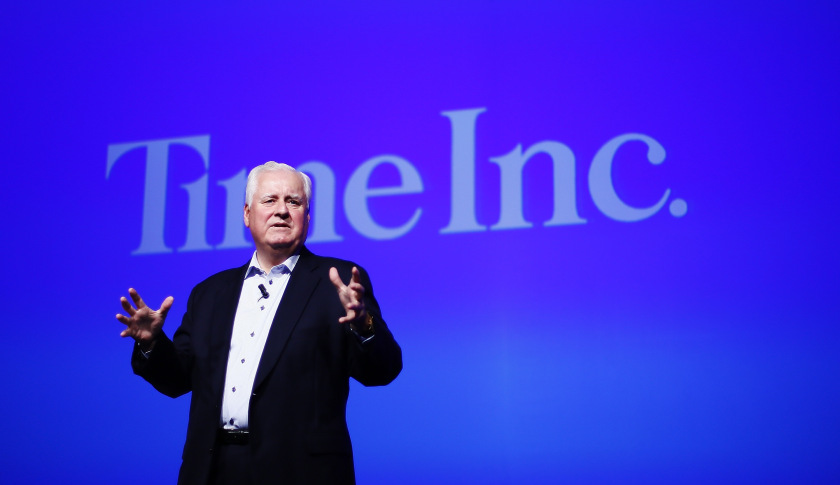New Leadership at Time Inc., EU’s Latest Move Against Google, U.K. Instant Articles Results, Relaunch of Harris Titles, AEM Mobile Tip: Creating Cards and Card Mapping Rules, Adobe Experience Manager Mobile v2016.11 Release
Welcome to Technology for Publishing’s roundup of news and tips for media industry pros! This week, we’re sharing stories about Time Inc. CEO Joe Ripp’s departure and successor, the European Union’s plan to make Google pay to run copyrighted content, how U.K. publishers are faring on Instant Articles, Athlon’s relaunch of seven Harris print titles, and more.
- In an executive shuffle at Time Inc., company chairman and CEO Joe Ripp stepped down, with media reports saying Ripp cited a “health incident” as the reason for his departure (though some linked the timing to a recent investment by Jana Partners). Taking his place is former Fox executive Rich Battista, who most recently served as president of Time titles People and Entertainment Weekly. Fortune said the publisher appointed Battista to accelerate its transition from print to digital and drive more ad revenue through platform partnerships and its native business. One of his first moves as the new CEO was to promote Jen Wong, president of digital, to the newly created role of chief operating officer. According to a Digiday post, Ripp laid some solid groundwork for the new leadership, from modernizing infrastructure to expanding events, creating niches, and more.
- Here’s a concept: Make services like Google News and YouTube pay when they run content owned by copyright holders. That’s what the European Commission is aiming for in new draft rules that would give publishers a more equitable share of the income generated by their articles and videos. Google, of course, fired back in a blog post that the rules would essentially make it a “copyright cop,” forcing it to vet all content before it could be shared: “This would effectively turn the internet into a place where everything uploaded to the web must be cleared by lawyers before it can find an audience.” Bloomberg detailed this latest move in an ongoing battle between the search giant and European publishers, who say Google is raking in profits from advertising shown next to most of the content running on its platforms without fairly compensating the owners of that content.
- On the topic of platforms—and whether they’re driving revenue and traffic for publishers—Digiday reported mixed reviews from U.K. media companies using Facebook Instant Articles. Trinity Mirror, one of the major publishers testing it, said the service is expanding its international reach and boosting its bottom line, though it wouldn’t reveal specifics. However, a national newspaper executive (who wanted to remain anonymous) was quoted in the article: “Every time you make a change to anything you do, it costs money in your product team, so we wanted to get live with it and then monitor the traffic to assess if it’s worth continuing with or increasing it. But we’ve not yet seen sufficient traffic increases to justify investing in it any further.” Overall, publishers in the U.K. and elsewhere are approaching the platform with caution and keeping its potential to increase revenue in perspective. Every bit helps, said one industry executive, but “it’s pennies, not pounds.”
- On the print side, Athlon announced it will relaunch at least seven titles it acquired when it bought Harris Publications in July. A Folio post said the company hired a team of former Harris editors, designers, and operations staff to produce the pubs, which will be available on newsstands and distributed to Athlon’s 1,400 AMG/Parade newspaper partners through its Partner Enhancement Program. “It’s not just delivering Parade magazine,” said new EVP Dave Barber. “There’s other content now that we can provide in our sweet spots of food, sports, and lifestyle.” While the print-driven distribution model is in decline, Parade magazine continues to reach 22 million readers through 624 newspapers in the U.S.
On the Technology for Publishing Blog
- AEM Mobile Tip: In Adobe Experience Manager Mobile, cards are used to display collections, articles, and banners, and are arranged in layouts according to card mapping rules. Monica Murphy’s new tip outlines the steps to create both.
- AEM Mobile Update: Get all the new and improved features and bug fixes in Version 2016.11.
- TFP’s Infographic Pick: Our latest selection offers five steps to help you determine whether your social content investments are paying off.
Photo: Fortune
Visit our blog for highlights of interesting and noteworthy stories from the publishing world every Friday, and sign up for TFP’s This Week in Publishing newsletter. Think we missed something great? Let us know! Leave a comment below or drop us a note.
Posted by: Monica Sambataro



